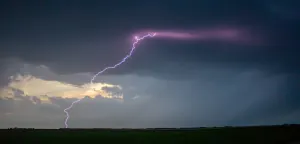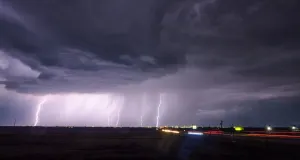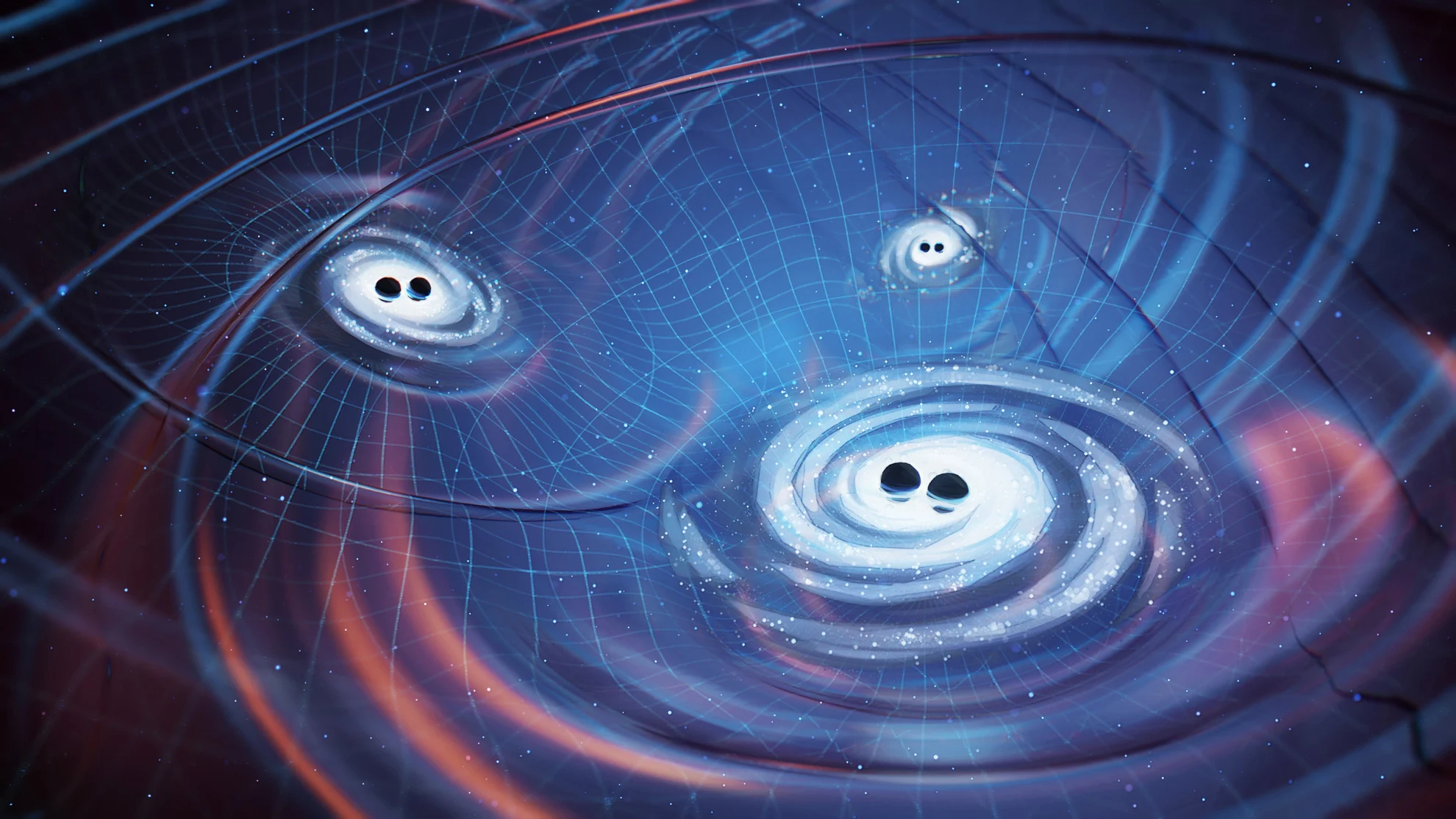
Dead stars reveal the universe's background 'hum' of gravitational waves
These ripples through spacetime point to the merging of galactic supermassive black holes.
Using an array of ticking pulsars stretched across part of the Milky Way, astronomers have found the 'background hum' of gravitational waves that could be the result of merging supermassive black holes throughout the universe. This discovery could potentially open up an entirely new era of astronomy.
On September 14, 2015, at 5:51 a.m. EDT, scientists made the very first detection of gravitational waves. Tiny ripples travelling through the fabric of space-time were picked up as they passed through the Earth, which had originated from the merger of a pair of black holes, located around 1.4 billion light years away. The colossal forces the pair exerted on each other as they spiralled towards their merger warped and buckled the very fabric of the universe around them. This resulted in tiny waves — each about a thousandth the width of a proton — radiating outward at the speed of light through space-time, similar to how ripples travel along the surface of a pond. These were ultimately picked up by the Laser Interferometer Gravitational-wave Observatory (LIGO), as the gravitational waves squeezed and stretched the detector by an extremely small amount (about a thousandth of the width of a proton).
In the years since, more gravitational waves have been detected from merging stellar-mass black holes, as well as from merging neutron stars, another type of dead star slightly less massive than black holes.
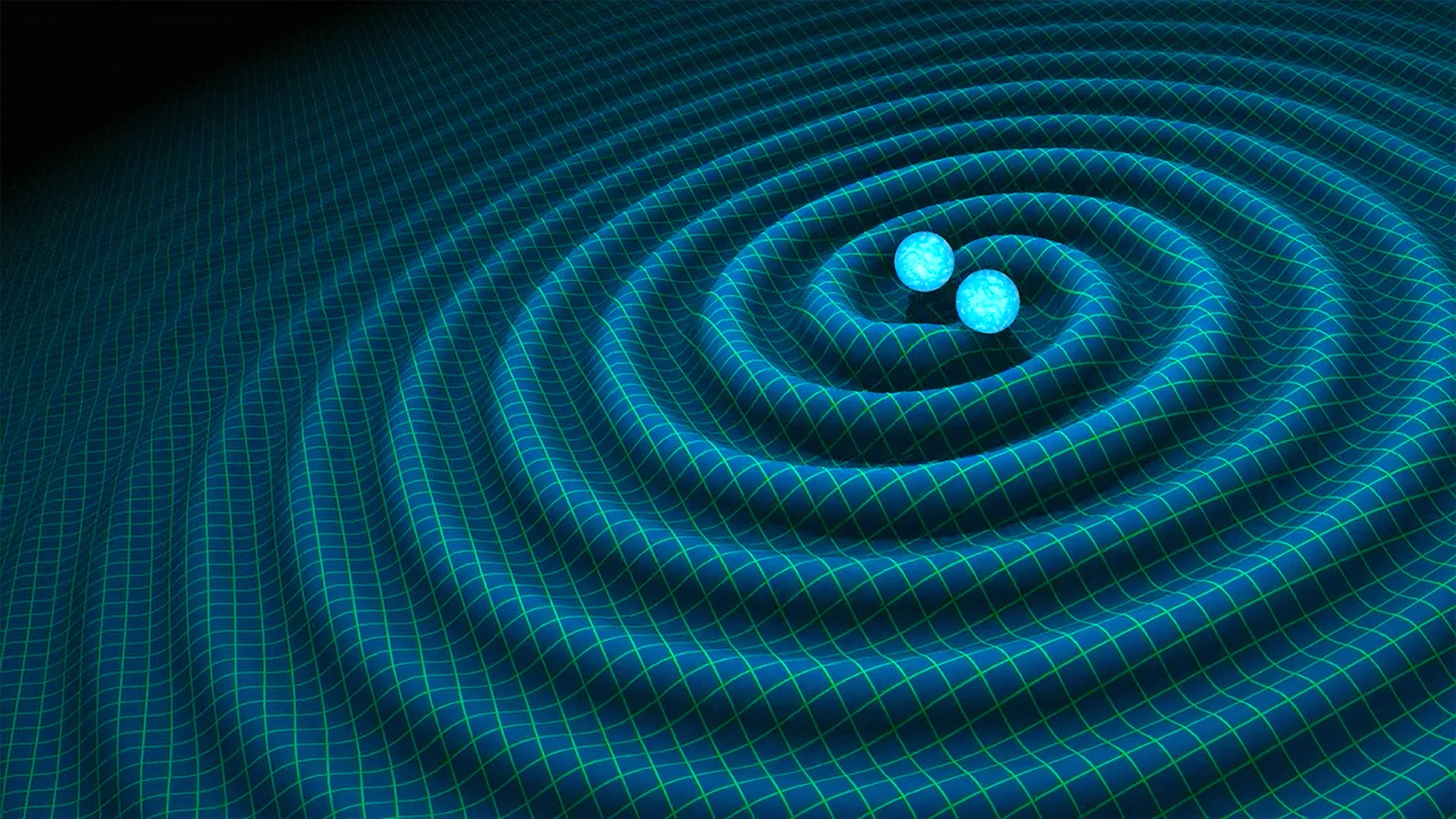
The merger of two neutron stars causes space-time ripples known as gravitational waves. Credit: R. Hurt/Caltech-JPL
Now, astronomers have just announced the detection of a new class of "slowly undulating" gravitational waves. Rather than taking fractions of a second to sweep past us, like the waves produced by black hole or neutron star mergers, the gravitational waves found by the NANOgrav collaboration take years or even decades to pass through our region of space.
If previous gravitational wave detections are likened to individual musical notes in a song, these new ones would be more like a distinct 'hum' in the background.
"Now that we have evidence for gravitational waves, the next step is to use our observations to study the sources producing this hum," Dr. Sarah Vigeland, who co-led the NANOgrav collaboration from the University of Wisconsin-Milwaukee, said in a press release. "One possibility is that the signal is coming from pairs of supermassive black holes, with masses millions or billions of times the mass of our Sun. As these gigantic black holes orbit each other, they produce low-frequency gravitational waves."
Revealed by 'cosmic clocks'
This discovery wasn't an accident. It involved very precise and extremely patient observations of a collection of pulsars for the past 10-15 years, by nearly 200 researchers and multiple telescopes around the world.
Pulsars are the super-dense, rotating remnants of dead stars. As they spin, some at thousands of times per second, they emit beams of radiation out into space that sweep around, a bit like the light emitted by a lighthouse. Each time the radiation beam from one of these pulsars sweeps across Earth, it is detected by radio telescopes, and the timing of the pulsars is so steady and well-known that they can be used as 'cosmic clocks'.
"The fastest pulsars, millisecond pulsars, are one and a half times the mass of our Sun compressed to the size of a city, and can rotate faster than a blender. They are particularly reliable and stable as cosmic clocks, because we can measure the arrival of their pulses down to tens or hundreds of nanoseconds," Kathryn Crowter, a NANOGrav researcher currently pursuing her doctorate at the UBC department of physics and astronomy, said in a UBC press release. "This allows us to detect the tiny variations caused by gravitational waves."

This illustration shows the pulses from millisecond pulsars being affected by a gravitational wave background produced by supermassive black hole binaries distributed throughout the Universe. Credit: Tonia Klein/NANOGrav
However, the scientists noticed tiny variations in the timing of these pulsars. The same changes were spotted by different telescopes, so they weren't errors in the instruments. There also appeared to be nothing about the pulsars themselves, nor was there anything in the space between them and Earth that could account for these timing changes.
As they gathered data on these variations, a pattern emerged that pointed to something much more fundamental going on. It wasn't the pulsars or anything in space causing these changes in timing. Instead, it was the fabric of space-time, itself.
The variations were the result of the pulsars' radiation beams passing through space warped by immense gravitational waves.
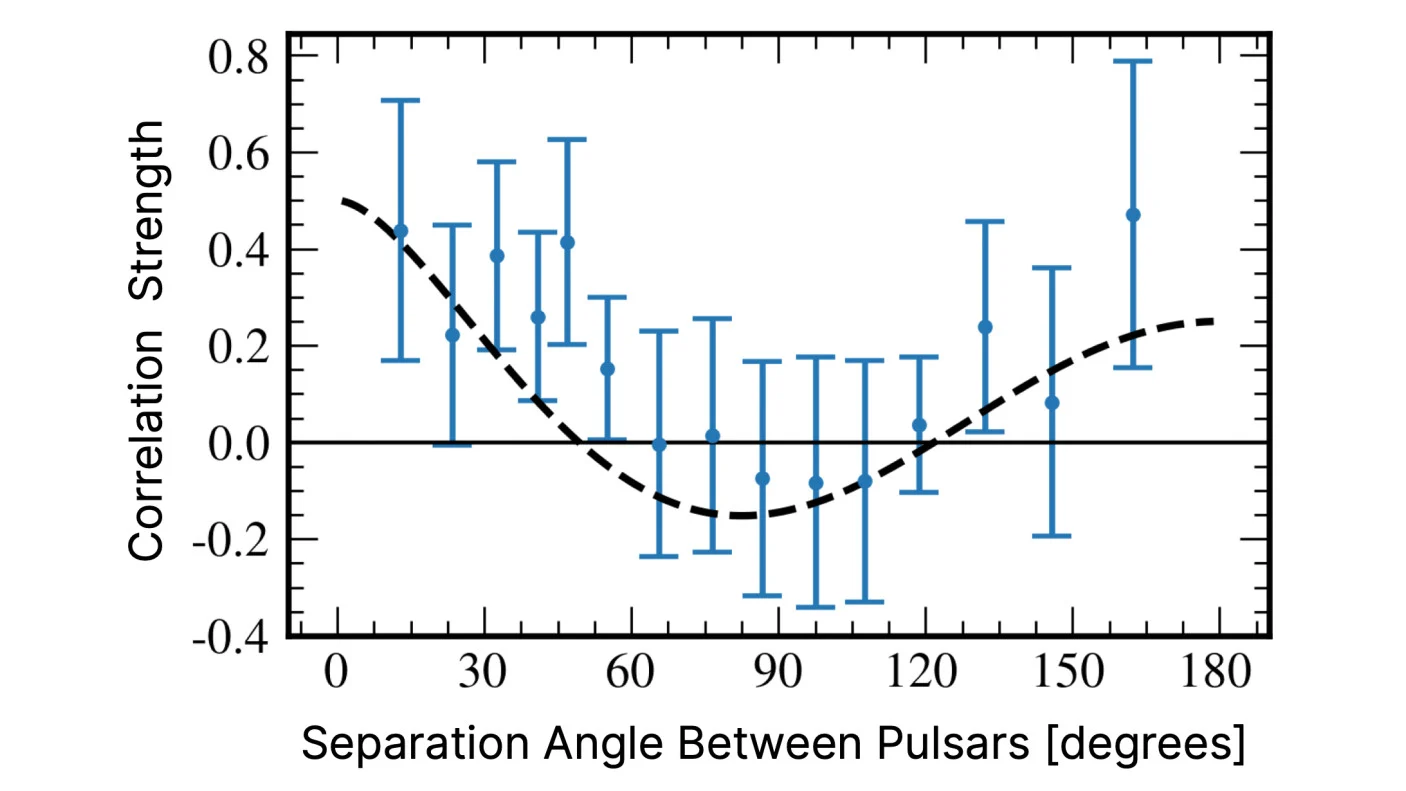
The black wave-like curve plotted here depicts what the variations in timing from pulsars should look like, based on theory. The blue dots (with error bars) depict the actual data collected by NANOGrav, which very closely matches the shape of the theoretical variations. Credit: Gabriella Agazie et al 2023/Astrophysical Journal Letters/NANOGrav Collaboration
"This is the first evidence for gravitational waves at very low frequencies," Dr. Stephen Taylor from Vanderbilt University, who co-led the research with Dr. Vigeland, said in the NANOgrav press release. "After years of work, NANOGrav is opening an entirely new window on the gravitational-wave universe."
An exciting result
Although the group still needs to go through all the data in order to positively identify the sources of these low-frequency gravitational waves, the prospects of what they might find have scientists fairly excited.
As the researchers have pointed out, one potential source is merging supermassive black holes.
As far as we know, at the core of each galaxy is a black hole millions to billions of times the mass of our Sun. Telescopes have captured views of galaxies merging, and galaxies that are in the aftermath of a merger. Thus, the supermassive black holes of these merging galaxies must also merge together.

This artist's conception drawing shows an array of pulsars being affected by gravitational ripples produced by a supermassive black hole binary in a distant galaxy. Credit: Aurore Simonnet/NANOGrav Collaboration
The process would happen very slowly, over the course of millions of years. However, the timing and scale of such a merger could produce these low-frequency space-time ripples with wavelengths lightyears long.
"We think these systems of black holes exist everywhere in the early universe. If we can get a very precise measurements of the gravitational waves, we can get a better idea of how many of these pairs there are, and how they behave," Dr. Ingrid Stairs, co-founder of NANOgrav and professor of physics and astronomy at UBC, said in the press release. "This in turn could give us more information about some of the processes in the early universe such as galaxy formation."
(Thumbnail courtesy Olena Shmahalo/NANOgrav Collaboration)









